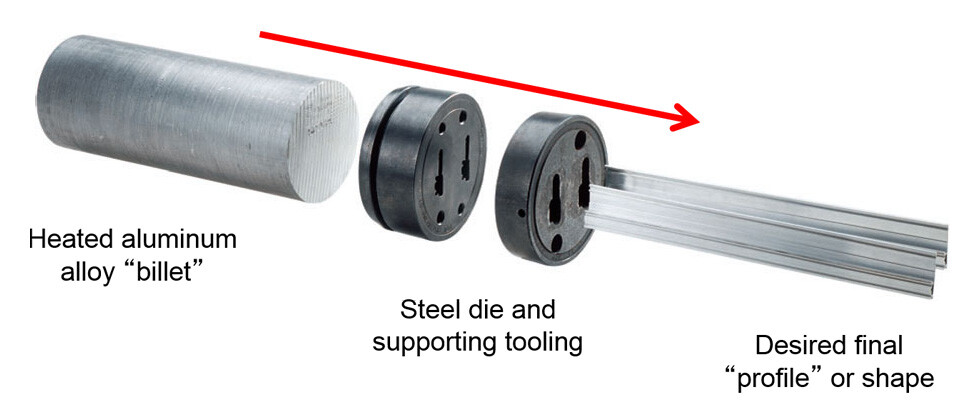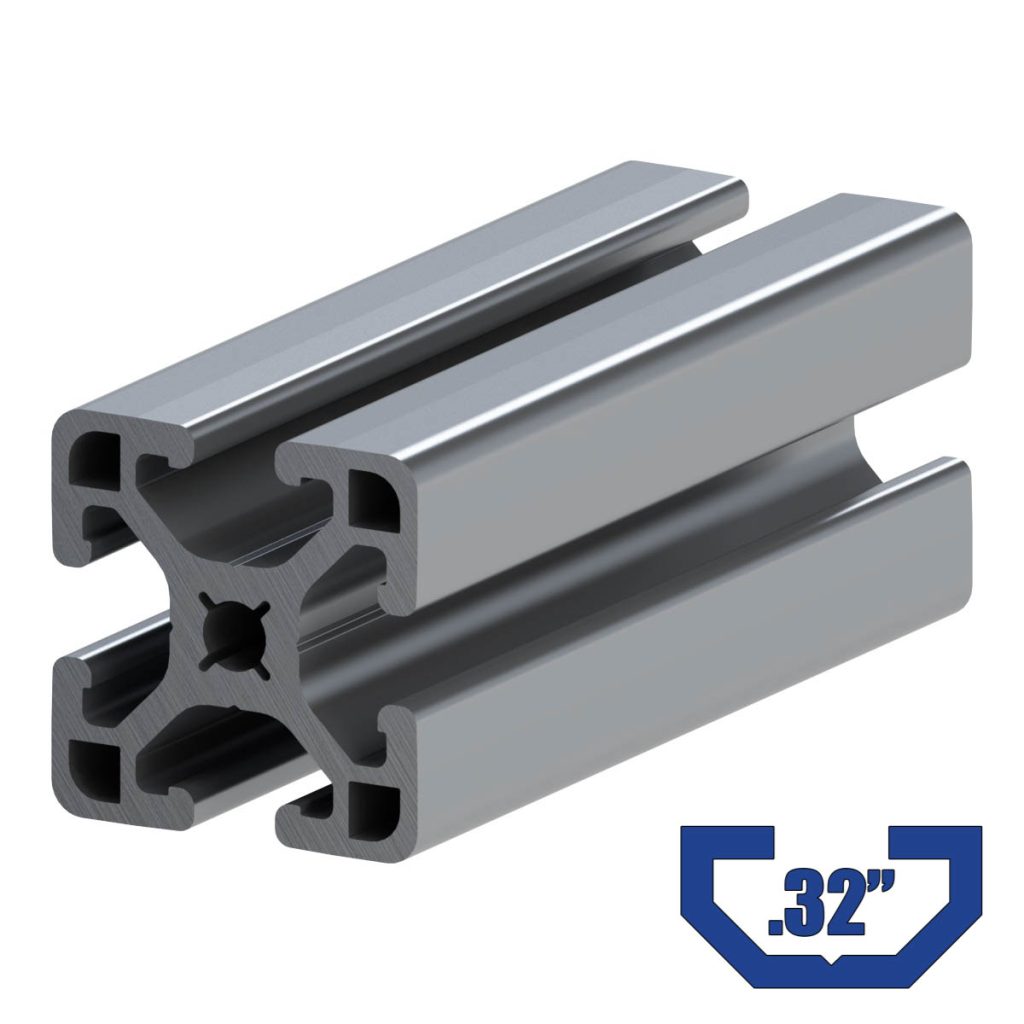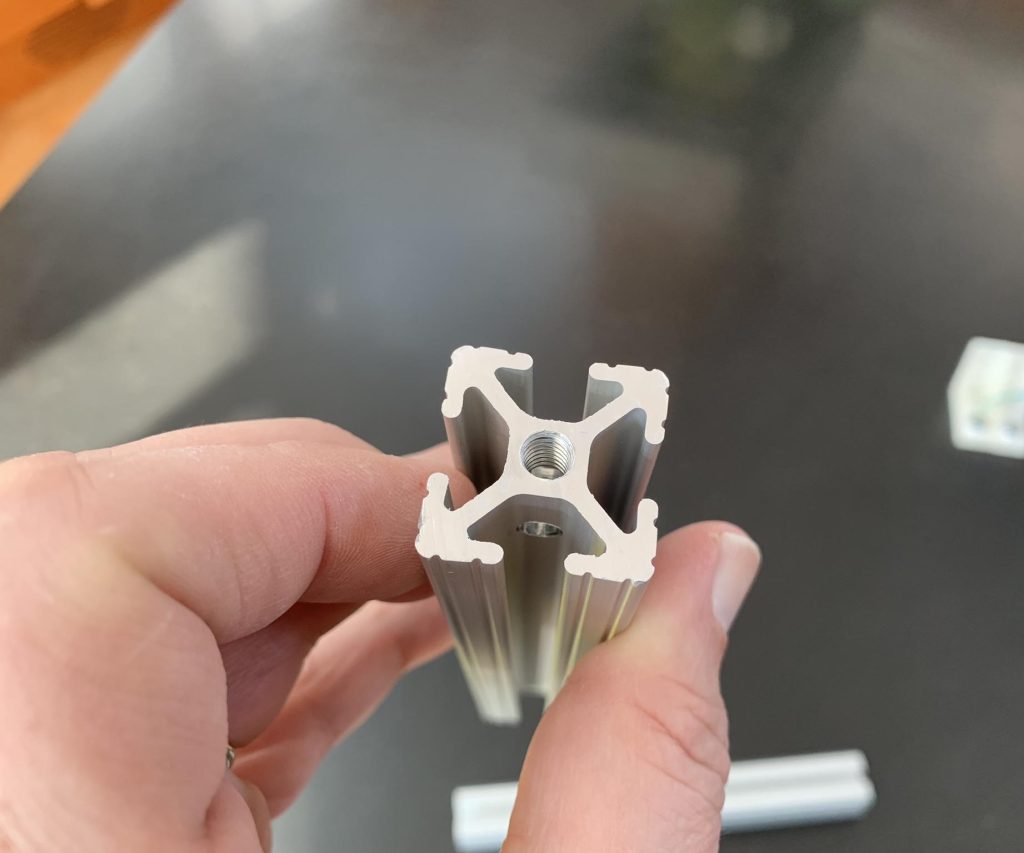Table of Contents
Aluminum extrusions are highly versatile and widely used in various industries. However, sometimes they may not be as strong as desired, and that’s when stiffening becomes necessary. Stiffening aluminum extrusions can help to increase their strength and durability, making them suitable for more demanding applications.
In this article, we will explore the different methods that can be used to stiffen aluminum extrusions. From adding internal braces to using adhesive bonding, we will cover everything you need to know to make your extrusions stronger and more reliable. So, whether you’re a DIY enthusiast or a professional engineer, read on to learn how to stiffen your aluminum extrusions like a pro.
To stiffen aluminum extrusions, you can use several methods. One way is to add ribs or flanges to the extrusion design. Another way is to use a thicker aluminum extrusion or add internal supports such as gussets. Additionally, you can use adhesives or welding to attach stiffening elements to the extrusion. Experiment with different methods to find the best solution for your application.
How to Stiffen Aluminum Extrusions?
Aluminum extrusions are widely used in various industries due to their lightweight, sturdy, and durable nature. However, sometimes, even the most robust extrusions require stiffening to improve their strength and stability. In this article, we will discuss the different ways to stiffen aluminum extrusions and the benefits of doing so.
1. Bracing and Reinforcing
Bracing and reinforcing are two commonly used methods to stiffen aluminum extrusions. Bracing involves adding extra support to the extrusion, usually in the form of brackets, gussets, or plates. Reinforcing involves adding extra material to the extrusion, making it thicker and stronger.
To brace an extrusion, you first need to identify the areas that require support. Once you have identified these areas, you can add brackets, gussets, or plates to provide extra support. These components can be attached to the extrusion using screws or bolts.
Reinforcing an extrusion involves adding material to the areas that require stiffening. This is usually done by welding or bolting extra material to the extrusion. The added material can be in the form of plates or sections of extrusion.
2. T-slot Accessories
T-slot accessories are another way to stiffen aluminum extrusions. T-slot accessories are designed to fit into the T-slots of the extrusion and provide extra support. These accessories can be used to create frames, workstations, and other structures.
T-slot accessories come in a variety of shapes and sizes, including brackets, connectors, hinges, and panels. These accessories can be easily installed and adjusted to provide the required support.
3. Resin Injection
Resin injection is a method of stiffening aluminum extrusions that involves injecting resin into the extrusion. The resin fills the cavities in the extrusion, making it stiffer and stronger.
To inject resin into an extrusion, you first need to drill holes into the extrusion. These holes are then filled with resin, which hardens and stiffens the extrusion. Resin injection is a quick and cost-effective way to stiffen aluminum extrusions.
4. Heat Treatment
Heat treatment is a process that involves heating the extrusion to a high temperature and then cooling it rapidly. This process changes the properties of the extrusion, making it stiffer and stronger.
Heat treatment is usually done by professionals who have the equipment and expertise to perform the process correctly. It is a more expensive method of stiffening aluminum extrusions, but it yields excellent results.
5. Benefits of Stiffening Aluminum Extrusions
Stiffening aluminum extrusions provides several benefits, including:
- Improved strength and stability
- Reduced deflection and deformation
- Better load-carrying capacity
- Increased resistance to bending and twisting
- Longer lifespan
6. Stiffening Aluminum Extrusions vs. Using Steel
Stiffening aluminum extrusions is often a better option than using steel for several reasons:
- Aluminum is lighter than steel, making it easier to handle and transport
- Aluminum is more corrosion-resistant than steel
- Aluminum is less prone to fatigue failure than steel
- Aluminum is more cost-effective than steel in most cases
7. Conclusion
Stiffening aluminum extrusions is a cost-effective way to improve their strength and stability. There are several methods to stiffen aluminum extrusions, including bracing, reinforcing, using T-slot accessories, resin injection, and heat treatment. Each method has its advantages and disadvantages, and the choice depends on the specific requirements of the application.
Regardless of the method used, stiffening aluminum extrusions provides several benefits, including improved strength and stability, reduced deflection and deformation, better load-carrying capacity, increased resistance to bending and twisting, and longer lifespan. Stiffening aluminum extrusions is often a better option than using steel due to its lighter weight, corrosion resistance, and cost-effectiveness.
Frequently Asked Questions
Aluminum extrusions are widely used in various industries due to their lightweight and versatile nature. However, in some cases, they may require stiffening for specific applications. Here are some frequently asked questions about how to stiffen aluminum extrusions.
How can I stiffen an aluminum extrusion?
There are several ways to stiffen an aluminum extrusion. One of the simplest methods is to add an internal brace or support. This can be achieved by inserting a metal or plastic insert into the extrusion during the manufacturing process or retrofitting it later. Another option is to use adhesive bonding to attach a stiffening element to the extrusion. This can be done with various materials, such as metal plates or carbon fiber.
Additionally, you can increase the wall thickness of the extrusion by using a thicker gauge material or adding a layer of material to the existing wall. This will increase the overall strength and stiffness of the extrusion. However, it may also increase the weight and cost of the part.
What factors should I consider when choosing a stiffening method?
When choosing a stiffening method, there are several factors to consider. First, you need to determine the required stiffness and strength of the extrusion for the specific application. This will help you decide on the appropriate method and materials to use. Second, you need to consider the manufacturing process and any limitations or restrictions that may affect your choice of method. Finally, you need to evaluate the cost and weight implications of each method and determine the most optimal solution.
It is also important to consult with a professional engineer or expert in the field to ensure that the chosen method will meet the required performance criteria and adhere to industry standards and regulations.
Can stiffening an aluminum extrusion affect its appearance?
Yes, stiffening an aluminum extrusion can affect its appearance, depending on the chosen method. For example, adding an internal brace or support may not be visible from the outside, but using adhesive bonding or increasing the wall thickness may result in a visible change in the surface finish or texture of the extrusion.
To minimize the aesthetic impact, you can choose a stiffening method that does not require any visible attachments or alterations to the extrusion. Alternatively, you can apply a paint or coating to the extrusion after stiffening to achieve a uniform appearance.
Is it necessary to stiffen all aluminum extrusions?
No, it is not necessary to stiffen all aluminum extrusions. The need for stiffening depends on the specific application and performance requirements. Some extrusions may be designed with sufficient stiffness and strength for their intended use, while others may require additional support.
It is important to evaluate each application individually and consider factors such as load capacity, deflection, and vibration resistance to determine if stiffening is necessary. Consulting with an expert in the field can also help you make an informed decision.
What are the benefits of stiffening an aluminum extrusion?
Stiffening an aluminum extrusion can provide several benefits, depending on the application. It can increase the overall strength and stiffness of the extrusion, allowing it to withstand higher loads and resist deflection or deformation. This can improve the performance and durability of the part, as well as enhance safety and reliability.
Additionally, stiffening can enable the extrusion to be used in applications where higher stiffness is required, such as aerospace or automotive industries. It can also allow for more precise and accurate positioning of components or equipment.
In conclusion, stiffening aluminum extrusions can be achieved through various methods. One of the most effective ways is to use a heat treatment process, which involves heating the aluminum to a specific temperature and then cooling it rapidly. This process hardens the metal and makes it more resistant to bending and deformation.
Another way to stiffen aluminum extrusions is to use mechanical methods, such as rolling or cold working. These methods involve applying pressure to the metal, which can change its shape and properties. However, they require specialized equipment and expertise, so they may not be suitable for everyone.
Overall, stiffening aluminum extrusions can help improve their strength and durability. Whether you choose to use heat treatment or mechanical methods, it’s important to work with a qualified professional to ensure the best results. With the right approach, you can achieve the stiffening you need to make your aluminum extrusions more effective in your application.
Request a quote today!
[contact-form-7 id="1578" title="Contact form"]
Please compress the file into a ZIP or RAR file before uploading. Alternatively, send through your RFQ by email.
enquires@unitymanufacture.com





